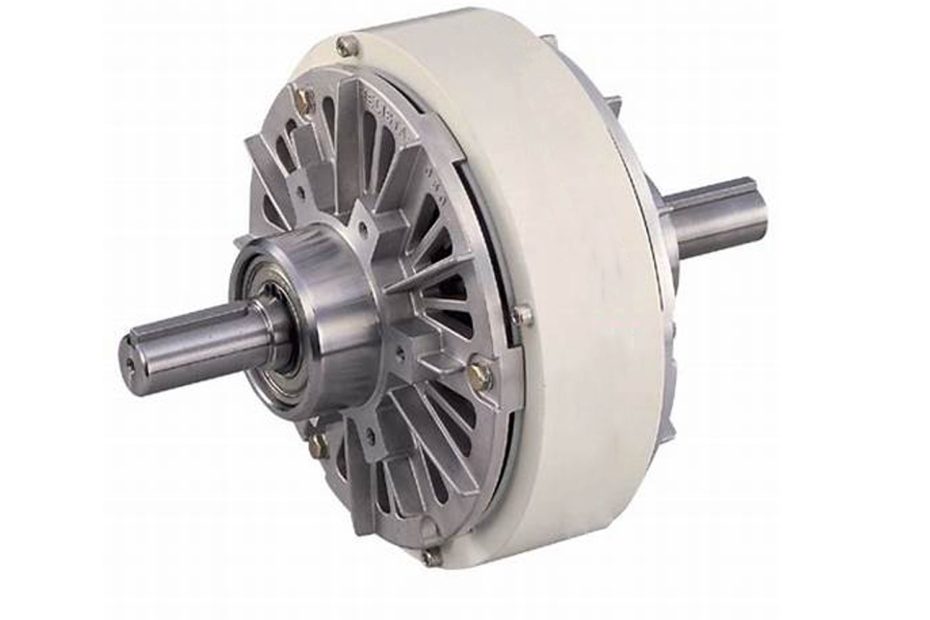In the realm of material testing machines, the choice of braking systems plays a pivotal role in ensuring accurate and reliable test results. Among the various options available, magnetic particle brakes have emerged as a preferred choice for their unique set of advantages. This article delves into the reasons behind the increasing popularity of magnetic particle brakes in material testing machines.
At the heart of the magnetic particle brake lies a complex interplay of physics and engineering. Comprising an input rotor and an output stator, these brakes leverage the manipulation of magnetic fields to control the transmission of torque. As the magnetic particles within the brake react to the applied magnetic field, they form chains that resist motion, allowing for precise regulation of torque and speed.
Magnetic particle brakes operate on the principle of utilizing magnetic fields to control the torque transmitted between the input and output shafts. Comprising two main components – the input rotor and the output stator – these brakes manipulate the flow of magnetic particles to regulate the braking force. The mechanism involves applying a magnetic field to the particles, inducing them to form chains that resist motion, thus controlling the torque and speed.
Magnetic Particle Brake : Advantages Over Traditional Braking Systems
- The widespread adoption of magnetic particle brakes is not arbitrary; rather, it stems from the distinctive advantages they offer over traditional braking systems. The following list outlines these advantages:
- Precision Control: Magnetic particle brakes provide unparalleled precision in controlling torque, a crucial factor in applications such as material testing where accuracy is paramount.
- Variable Torque Adjustment: The ability to adjust braking force according to specific requirements makes magnetic particle brakes highly versatile, accommodating a wide range of materials and testing scenarios.
- Smooth and Consistent Operation: The absence of mechanical wear and the smooth operation of magnetic particle brakes contribute to consistent and reliable performance, reducing the likelihood of experimental errors.
- Low Maintenance Requirements: Unlike traditional brakes that may require frequent maintenance, magnetic particle brakes operate with minimal physical contact between components, resulting in lower maintenance needs and increased operational efficiency.
The reasons increasing popularity of magnetic particle brakes in material testing machines
Precision Control in Material Testing
One of the primary reasons for the widespread adoption of magnetic particle brakes in material testing machines is their unparalleled precision control. When conducting tests that demand accurate force or torque application, precision is non-negotiable. Magnetic particle brakes excel in providing precise and repeatable braking performance, ensuring that the applied force during material tests is consistent and reliable. This level of control is particularly crucial in experiments involving delicate materials or those requiring stringent testing standards.
Variable Torque Adjustment
Material testing often involves a range of specimens with diverse mechanical properties. Magnetic particle brakes offer a distinct advantage in this context with their ability to provide variable torque adjustment. Researchers and engineers can easily tailor the braking force to suit the specific characteristics of the material being tested. This adaptability makes magnetic particle brakes versatile tools in material testing machines, accommodating a wide spectrum of testing requirements.
Smooth and Consistent Operation
In material testing, the reliability of results is contingent upon the consistent operation of testing equipment. Magnetic particle brakes, characterized by their smooth and stable performance, contribute significantly to the reliability of material testing machines. The absence of jerky movements or sudden changes in torque ensures that the testing process remains controlled and predictable, eliminating potential sources of error in experimental outcomes.
Maintenance Efficiency
Another compelling reason behind the preference for magnetic particle brakes is their low maintenance requirements. Traditional braking systems may involve wear and tear of mechanical components, necessitating frequent maintenance and replacement. In contrast, magnetic particle brakes operate without physical contact between components, minimizing the need for regular maintenance. This not only reduces downtime in material testing machines but also contributes to long-term cost savings.
Overcoming Temperature Challenges
Material testing often involves extreme temperature conditions, especially when assessing materials for specific industries such as aerospace or automotive. Magnetic particle brakes exhibit superior performance in varying temperature environments. Unlike some traditional braking systems that may experience diminished efficiency in extreme temperatures, magnetic particle brakes maintain their effectiveness, ensuring reliable results across a broad temperature range.
Conclusion
In conclusion, the widespread adoption of magnetic particle brakes in material testing machines can be attributed to their precision control, variable torque adjustment, smooth operation, low maintenance requirements, and resilience to temperature challenges. As technology continues to advance, these brakes are likely to play an increasingly integral role in shaping the future of material testing methodologies. Researchers and engineers alike are recognizing the significance of incorporating magnetic particle brakes to enhance the accuracy and reliability of their material testing processes.

